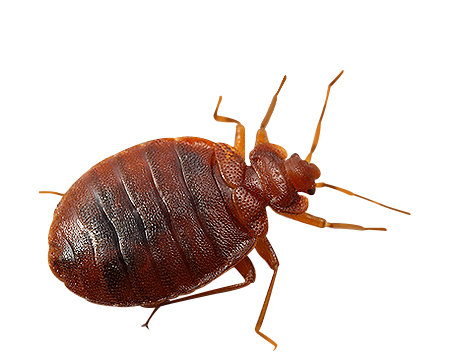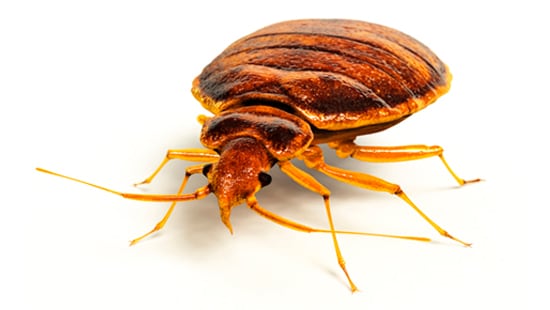How to Identify Bed Bug Bites and Prevent Future Infestations
How to Identify Bed Bug Bites and Prevent Future Infestations
Blog Article
Get Enlightened About the Kinds of Pest Control Techniques and Their Advantages for Property Owners
Understanding the various pest control techniques available to house owners is essential for effective pest monitoring. From chemical and biological strategies to cultural and mechanical practices, each technique offers unique benefits that can dramatically impact both wellness and ecological security. Home owners who are well-informed can make critical options that not only address insect problems yet likewise improve the total quality of their living environment. As we explore these approaches further, it comes to be clear that the decision-making procedure entails even more than simply instant outcomes; it touches on long-term sustainability and well-being. What aspects should influence these essential choices?
Chemical Bug Control Techniques
Chemical pest control approaches are a critical part of integrated bug monitoring methods for homeowners looking for reliable remedies to pest invasions. These techniques include the application of chemical substances designed to eliminate or prevent parasites that threaten individual home, health, and convenience. Usual chemicals used consist of pesticides, fungicides, rodenticides, and herbicides, each customized to target details pests.
The main advantage of chemical pest control is its fast effectiveness; numerous formulations offer instant outcomes, decreasing pest populaces substantially in a brief time. Furthermore, advances in chemical solutions have brought about items that are much more eco-friendly and have lower toxicity levels for non-target organisms when applied correctly.

Biological Bug Control Techniques
All-natural parasite control methods have actually gained importance as homeowners look for safer and extra lasting choices to standard chemical approaches. Organic parasite control strategies make use of all-natural killers, parasites, or virus to manage insect populations effectively. This approach is not only ecologically friendly yet likewise lessens the danger of damage to non-target species, including helpful pests and wildlife.
One of the most common biological control methods includes presenting natural predators into the atmosphere. For example, ladybugs can be used to regulate aphid populaces, while nematodes target soil-dwelling bugs like grubs. Additionally, parasitoids-- microorganisms that live on or within a host-- can be employed to manage certain bug types by laying eggs inside them, ultimately causing their death.
Another method is the use of biopesticides, which are derived from all-natural products such as plants, minerals, or bacteria (bed bug exterminator). These items can successfully target parasites while posing marginal risk to humans and animals. On the whole, organic pest control methods supply home owners with an effective ways of insect administration that aligns with ecological concepts, promoting a much healthier living atmosphere while lowering dependence on synthetic chemicals
Mechanical Insect Control Techniques
Mechanical insect control approaches encompass a variety of techniques that physically avoid or eliminate bugs without making use of chemicals. These techniques Visit Your URL are especially helpful for property owners looking for eco pleasant options while making sure the safety of their home.
One common approach is the usage of obstacles, such as screens, catches, and webs, which stop pests from going into homes or particular locations. As an example, setting up home window displays can effectively keep pests out, while using physical obstacles around yards can hinder larger bugs like deer or bunnies. In addition, mechanical catches created for rodents can catch and eliminate these insects without the requirement for poisonous materials.
One more effective technique involves using brooms and vacuum cleaners to get rid of pests straight from surface areas. Regular cleaning and maintenance can substantially minimize bug populaces by removing food sources and concealing spots. Moreover, employing gadgets like ultrasonic pest repellents can deter different parasites with acoustic wave that are unpleasant to them but inaudible to humans.
Cultural Parasite Control Practices
Social pest control methods concentrate on changing the environment and monitoring strategies to develop conditions that are less for pest infestations. These methods are essential in preserving a balanced ecosystem and minimizing the dependence on chemical treatments. By changing farming practices, homeowners can successfully hinder parasites while promoting plant health.
One common method includes plant rotation, which interferes with the life process of insects by changing the kinds of plants expanded in a particular area (bed bug exterminator). This not just minimizes pest populations yet also enhances soil health. Furthermore, intercropping-- planting varied crops in proximity-- can puzzle insects and decrease their capacity to locate their preferred host plants
Water monitoring is an additional critical aspect of social practices. Correct watering strategies can prevent standing water, which acts as a reproduction ground for insects and various other pests. Keeping sanitation in and around the home, such as routinely getting rid of debris and food waste, can significantly minimize insect destination.
Integrating these cultural practices into a comprehensive pest administration approach permits homeowners to develop an atmosphere that naturally hinders bugs, therefore improving the performance of other control methods while promoting sustainable horticulture and landscaping.

Integrated Pest Administration Approaches
Integrated Insect Monitoring (IPM) represents an all natural technique read this that integrates various strategies to efficiently take care of pest populations while reducing ecological effect. This method integrates biological, cultural, physical, and chemical techniques to achieve sustainable bug control. By assessing pest populaces and their natural opponents, see IPM stresses monitoring and determining pests prior to executing control procedures.
One of the core principles of IPM is using thresholds, which develop the level of bug task that calls for treatment. This makes certain that therapies are used just when essential, minimizing the reliance on chemical pesticides. Biological control techniques, such as introducing all-natural killers or bloodsuckers, work in combination with cultural methods like crop turning and environment control to interrupt pest life cycles.
In addition, IPM motivates using least-toxic chemical choices when intervention is necessary, prioritizing items that present marginal risk to non-target organisms and the environment. For house owners, taking on IPM comes close to not just enhances the efficacy of pest administration but additionally advertises a much healthier living atmosphere, promoting biodiversity and reducing chemical exposure. Inevitably, IPM equips house owners to make enlightened decisions that balance parasite control with environmental duty.
Conclusion
In verdict, recognizing the various parasite control methods empowers home owners to make enlightened choices regarding pest monitoring. Each approach-- chemical, organic, mechanical, cultural, and integrated pest administration-- offers distinctive benefits that cater to different needs and choices.
Recognizing the different parasite control approaches offered to house owners is vital for reliable parasite administration.Chemical pest control techniques are a vital part of incorporated insect monitoring techniques for home owners looking for reliable services to pest infestations. In general, biological pest control strategies provide property owners with a reliable means of insect monitoring that aligns with ecological concepts, advertising a healthier living setting while lowering dependence on synthetic chemicals.
Social pest control techniques concentrate on modifying the setting and management methods to create conditions that are much less helpful to pest invasions.In conclusion, comprehending the numerous pest control techniques empowers property owners to make educated decisions regarding pest management.
Report this page